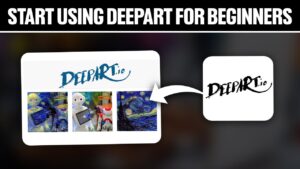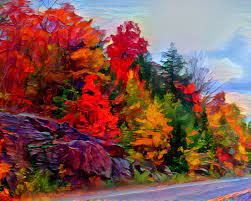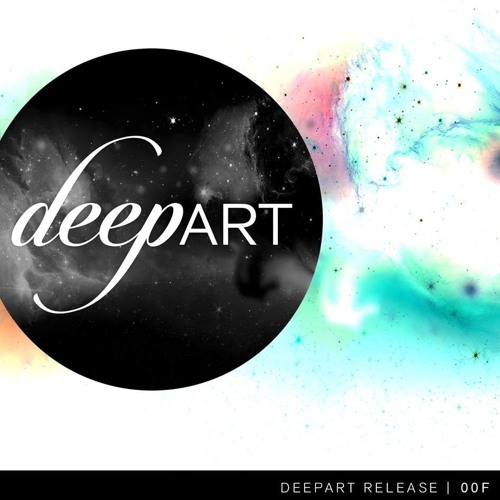DeepArt

The DeepArt: Fusing Art and Artificial Intelligence:
DeepArt: In an era where artificial intelligence (AI) is rapidly transforming creative industries, one platform has made its mark by blending technology with traditional art in a groundbreaking way: DeepArt. Leveraging deep learning algorithms to create artistic renderings, DeepArt allows users to reimagine photographs and images in the style of famous painters and artistic movements. With AI-generated art gaining popularity across the globe, DeepArt stands out as one of the earliest and most influential platforms in this evolving field.
What is DeepArt?
DeepArt, also known as DeepArt.io, is an online platform that uses neural networks to transform images into artwork inspired by various art styles. Launched in 2015 by researchers from Germany and Switzerland, the platform quickly gained attention for its ability to apply the artistic styles of famous painters—such as Vincent van Gogh, Pablo Picasso, and Edvard Munch—to everyday images.
The technology behind DeepArt is based on deep neural networks, a type of AI architecture that mimics the human brain’s ability to recognize patterns. By training these networks on large datasets of images and artistic styles, DeepArt can analyze the stylistic elements of a given artwork and apply them to new images, creating a blend of classical art with modern technology. The result is a unique piece of art that combines the content of one image with the aesthetic of another, allowing users to turn simple photos into masterpieces.
How DeepArt Works:
DeepArt uses an algorithm inspired by neural style transfer, a technique that applies the style of one image (the “style image”) to the content of another (the “content image”). This technique was popularized by a research paper published in 2015 by a team of researchers, including Leon Gatys, which detailed how neural networks could effectively separate and recombine content and style from different images.
Here’s a breakdown of the process:
- Content and Style Input: Users start by uploading a content image (such as a photograph or digital artwork) to the platform. They then select a style image—either from the platform’s library of famous artworks or by uploading their own.
- Neural Style Transfer: The AI processes the two images using deep learning algorithms, particularly convolutional neural networks (CNNs). These networks analyze the content image for its structural elements, while simultaneously analyzing the style image for patterns, textures, brushstrokes, and colors.
- Blending Content and Style: DeepArt’s algorithm synthesizes the content of the user’s image with the chosen artistic style. The final output is a reimagined version of the content image that retains the original structure but is rendered in the textures, colors, and brushstrokes of the selected style.
The process takes several minutes to complete, depending on the complexity of the image and style combination. Once finished, users receive a high-resolution version of their image that is visually transformed into an artistic piece.
Artistic Styles and Customization:
DeepArt is widely appreciated for its rich variety of artistic styles. The platform offers a selection of iconic painting styles from renowned artists, as well as abstract or contemporary styles that emphasize color, texture, and brushwork. Users can create images in the style of Van Gogh’s Starry Night, Picasso’s Cubism, or Edvard Munch’s The Scream, among many others.
While the platform’s default options are based on well-known artworks, users can also upload custom styles to create more personalized results. For example, an artist might want to create a piece that reflects their unique drawing technique or use an obscure style that isn’t in the default library. This ability to customize styles makes DeepArt highly versatile and user-friendly, catering to both casual users and professional creators.
Applications of DeepArt:

DeepArt has broad appeal across various fields, from personal creative projects to professional artistic endeavors. The platform’s ease of use makes it accessible to anyone with an interest in digital art, regardless of their artistic experience. Here are a few key applications of DeepArt:
- Personal Art and Gifts: Many users turn to DeepArt to create personal artworks, transforming their photos of landscapes, portraits, or family memories into beautiful, stylized images. These AI-generated pieces often become unique gifts or decorative items.
- Marketing and Advertising: Professionals in marketing, design, and advertising use DeepArt to generate eye-catching visuals for campaigns. The platform’s ability to quickly create art with a variety of styles makes it an invaluable tool for creating original content that stands out in a crowded digital landscape.
- Graphic Design: DeepArt has become a go-to tool for graphic designers and illustrators who want to quickly experiment with different visual aesthetics. The platform’s style transfer capabilities allow them to try out different art styles and develop unique looks for posters, websites, album covers, and other media.
- Fine Art and Printmaking: For traditional artists and printmakers, DeepArt provides a modern twist on classic techniques. Some artists use it to explore new creative directions or create mixed-media works that incorporate AI-generated art into hand-painted or printed pieces.
- Photography: Photographers use DeepArt to stylize their images, giving their work a painterly or abstract quality. This allows photographers to expand their creative toolkit and offer clients visually distinct options for their photoshoots, especially in the fields of fashion, portrait, and fine art photography.
The Impact of AI-Generated Art:
DeepArt has been instrumental in popularizing AI-generated art, sparking debates about the role of technology in creativity. By making it easy for anyone to create stunning, professional-looking artworks with a few clicks, platforms like DeepArt challenge traditional ideas of what it means to be an artist. Some see AI tools as a democratizing force, providing non-artists with the ability to create visually compelling pieces.
Despite these debates, there is no doubt that AI art tools like DeepArt are here to stay. They provide a powerful creative resource that can inspire professional artists and enthusiasts alike, expanding what’s possible in the world of visual creation. By blending the precision of machine learning with the human eye for beauty, AI-generated art opens new avenues for exploration and experimentation.
Ethical Considerations:
As with all AI art tools, DeepArt comes with ethical considerations. One issue is the question of authorship. When an AI algorithm generates an artwork based on a style created by a famous artist, how much credit goes to the user versus the machine versus the original artist? While users typically retain the rights to their DeepArt-generated images, the extent to which an image is considered original can vary depending on the amount of creative input from the user.
Another concern is the use of AI in commercial and professional settings. As AI tools become more widely adopted, there is potential for the automation of creative jobs, raising fears about the impact on human artists and designers. However, many view DeepArt as a collaborative tool that augments human creativity rather than replacing it.
The Future of DeepArt and AI Art:
As AI technology continues to evolve, DeepArt and similar platforms are likely to become even more sophisticated. Future versions of AI art platforms may offer more advanced customization options, allowing users to better control the blending of styles or even simulate new artistic techniques not yet seen in traditional media.
DeepArt has already proven its potential to revolutionize the way we think about art and creativity. By enabling users to reimagine the world through the lens of famous artistic styles, it has unlocked new possibilities for visual expression, making art more accessible and expanding the horizons of digital creativity.
Conclusion:
DeepArt is a powerful example of how AI can be harnessed to merge technology with human creativity. Its use of neural networks to create stylized images from user photos offers a glimpse into the future of art, where the boundaries between artist, tool, and creation are increasingly blurred. Whether used by professional artists, designers, or casual hobbyists, DeepArt is changing the way we create, interact with, and appreciate art, demonstrating that AI is not just a tool for automation, but a medium for innovation and exploration in the visual arts.
